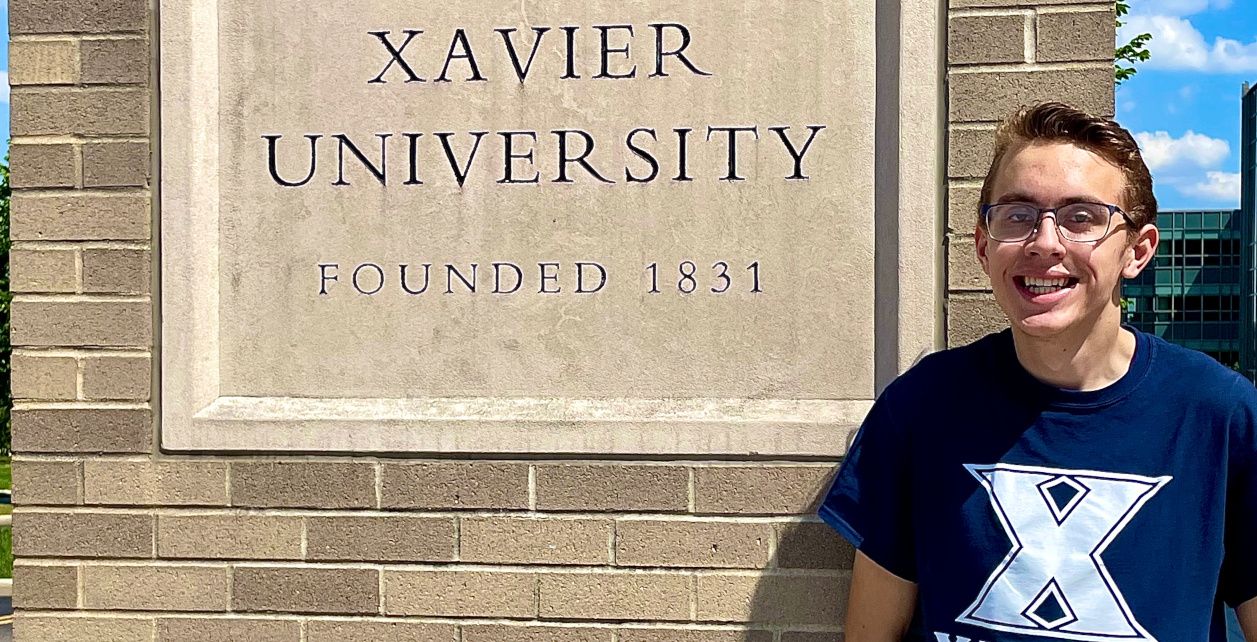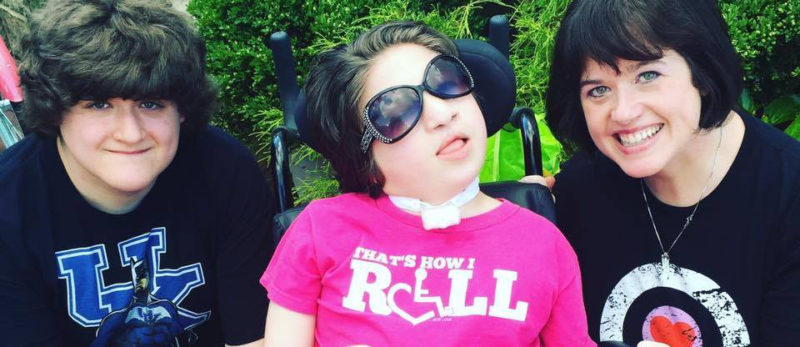In 2014, I brought my 10-year-old son, Ian, to the neuromuscular clinic at Cincinnati Children’s. We had been noticing for quite some time that he had limited muscle flexibility and issues with his speech. Initially, we thought he just had tight muscles and needed to be more active to move around and stretch more.
Over the next couple of months, the clinic ran several tests, eventually arriving at the conclusion that, while they did agree our son had a health issue, they couldn’t pinpoint what it was.
Over the next five years, on my own, I tried different strategies that I thought would help him, including stretching sessions with a personal trainer, yoga classes and speech therapy. While some of the activities helped for a while, the effects never lasted.
MEETING WITH GENETIC COUNSELING
Finally, in August 2019, we went back to Ian’s primary care doctor and requested another evaluation at Cincinnati Children’s. While our appointment was scheduled with the neurologist, it was a genetic counselor named Chinmayee who met with us first. From that moment on, she has held our hands throughout this whole process, providing the empathy and compassion you need when you’re seeking a diagnosis for your child.
She told us that Ian would need genetic testing and carefully walked us through the steps involved, including telling us what they would be looking for when they tested him for hundreds of muscular genetic mutations.
A couple of months after the test, Chinmayee called to explain the initial findings, which pointed toward a neuromuscular disease known as Emery-Dreifuss muscular dystrophy. However, the findings (the variant classification) came back as uncertain and were not conclusive.
RECEIVING A DIAGNOSIS
To further dig into this diagnosis and find a conclusive result, Chinmayee and our neurologist recommended more testing. This time with my son’s frozen muscle biopsy taken back in 2014. They wanted to examine his RNA sequencing to see if they could find a more definitive diagnosis. This test is sensitive, required two or three samples, and a lot of coordination from Chinmayee before it was successfully performed.
Finally, we had what we had been looking for—an answer. The RNA sequencing came back as positive, and the variant classification was updated to likely pathogenic. My son Ian, now 19, has a very rare type of Emery-Dreifuss muscular dystrophy: FHL1 with deletion of Exon 7.
I am the type of person who will do whatever I can to get an answer. I needed to know my son’s condition so that I could learn more about it and his prognosis. Thanks to Chinmayee, having an answer gave me a sense of relief and a path forward in dealing with his condition.
HAVING A DIAGNOSIS LED TO MORE SPECIALIZED CARE
As soon as Ian was diagnosed in August 2019, he was immediately placed in the care of a team of specialists at Cincinnati Children’s. This includes cardiology, pulmonary, orthopaedic, ENT and other departments.
Not only does Emery-Dreifuss affect muscles used for movements and breathing, but its top issue is cardiac problems. This can lead to complications, including cardiac arrest. Ian has also been diagnosed with hypertrophic cardiomyopathy, and every six months the cardiologists run tests to monitor his heart function. They have also recommended that he avoid strenuous activities and prolonged exposure to heat. He is also encouraged to keep hydrated.
TESTING OTHER FAMILY MEMBERS
Although Ian now had a diagnosis, my journey with Chinmayee didn’t stop there. Since Emery-Dreifuss is an X-linked inherited condition, she suggested that my four sisters, their children, and me, also be tested for the mutation.
This is a handful to keep track of, but Chinmayee and I are cataloging the findings as each family member gets tested. I have the condition, and we’re finding that it’s fairly prevalent with my other family members, too. To say the least, Chinmayee knows a lot about my family, and it’s a big family at that.
In addition, she and Ian’s neurologist are working on a paper to be published in a scientific journal and will share their findings about my son’s condition at several upcoming scientific conferences. Their efforts will help bring attention to this rare disease in hopes that other families can avoid the long sequence of events we endured to get our diagnosis.
BECOMING EXTENDED FAMILY
Since our first meeting, Chinmayee has always been extremely responsive, answering my phone calls with questions same day. She goes out of her way to talk about non-medical issues, asking how Ian is doing in everyday activities, how Tim, Ian’s dad and our other son are coping, and how I am doing.
This is a big diagnosis for parents, and she will often ask me what I am doing to take care of myself. She often ends our phone calls by telling me that I am a great mother and that she is impressed with everything I do for Ian. These words of encouragement help me keep going. Chinmayee has become more than our genetic counselor—she’s become our extended family.





We are going through a very similar situation with my 3 year old son. Neuromuscular condition, but no diagnosis. I would love to hear the steps you took to try to figure everything out. Are you open to discussion? I would really appreciate it!